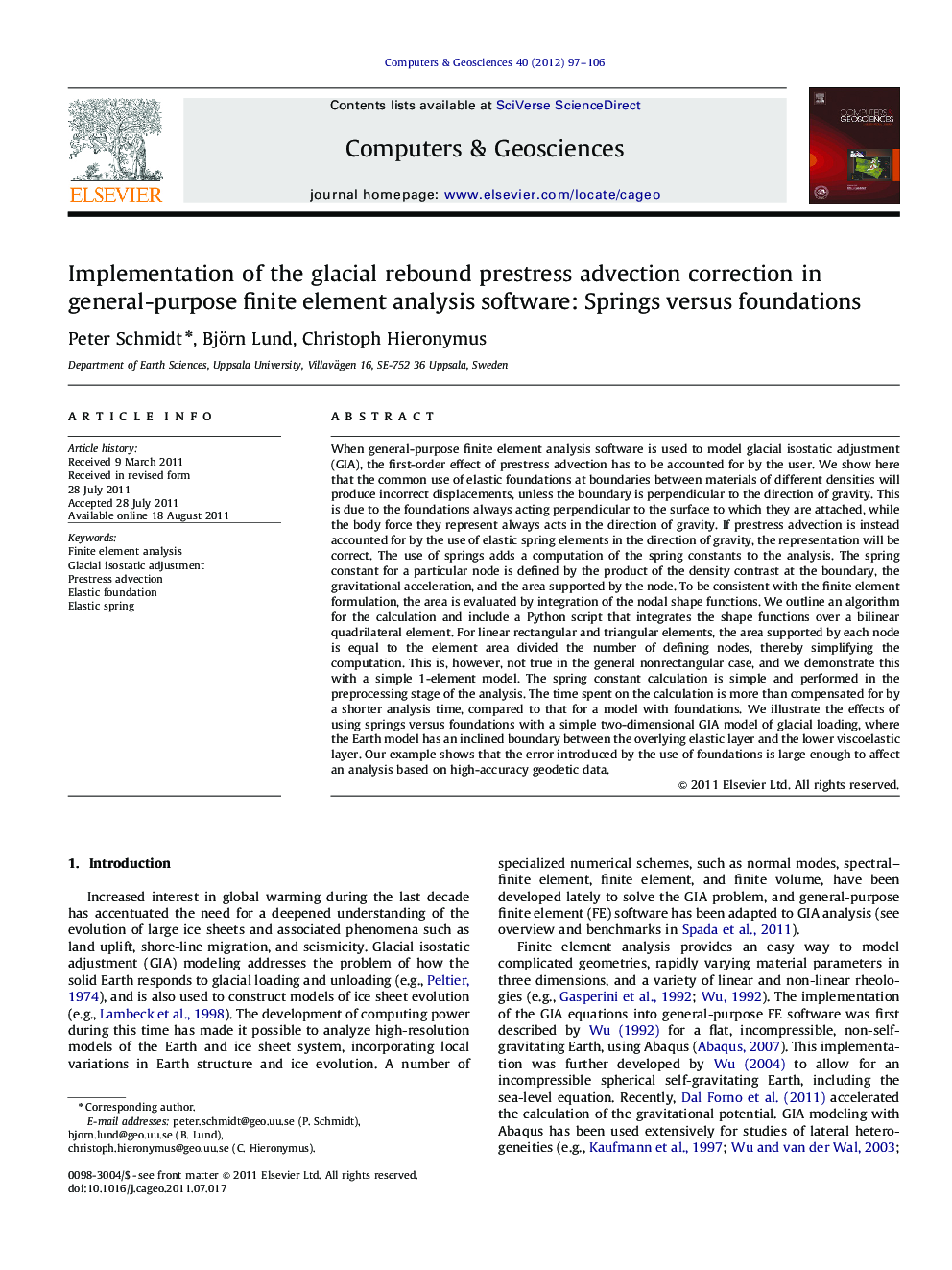| Article ID | Journal | Published Year | Pages | File Type |
|---|---|---|---|---|
| 507135 | Computers & Geosciences | 2012 | 10 Pages |
When general-purpose finite element analysis software is used to model glacial isostatic adjustment (GIA), the first-order effect of prestress advection has to be accounted for by the user. We show here that the common use of elastic foundations at boundaries between materials of different densities will produce incorrect displacements, unless the boundary is perpendicular to the direction of gravity. This is due to the foundations always acting perpendicular to the surface to which they are attached, while the body force they represent always acts in the direction of gravity. If prestress advection is instead accounted for by the use of elastic spring elements in the direction of gravity, the representation will be correct. The use of springs adds a computation of the spring constants to the analysis. The spring constant for a particular node is defined by the product of the density contrast at the boundary, the gravitational acceleration, and the area supported by the node. To be consistent with the finite element formulation, the area is evaluated by integration of the nodal shape functions. We outline an algorithm for the calculation and include a Python script that integrates the shape functions over a bilinear quadrilateral element. For linear rectangular and triangular elements, the area supported by each node is equal to the element area divided the number of defining nodes, thereby simplifying the computation. This is, however, not true in the general nonrectangular case, and we demonstrate this with a simple 1-element model. The spring constant calculation is simple and performed in the preprocessing stage of the analysis. The time spent on the calculation is more than compensated for by a shorter analysis time, compared to that for a model with foundations. We illustrate the effects of using springs versus foundations with a simple two-dimensional GIA model of glacial loading, where the Earth model has an inclined boundary between the overlying elastic layer and the lower viscoelastic layer. Our example shows that the error introduced by the use of foundations is large enough to affect an analysis based on high-accuracy geodetic data.
► We investigate GIA modeling using general purpose FEA software. ► We suggest that the prestress advection term should be implemented using springs. ► For inclined material boundaries the solution is shown to be significantly improved. ► We outline a simple algorithm to compute the spring constants exactly. ► A Python script for an exact integration of nodal shape functions is included.
